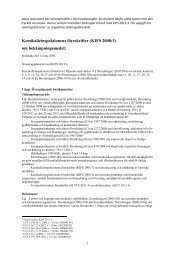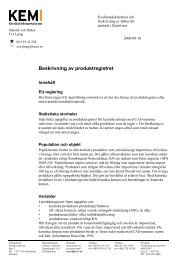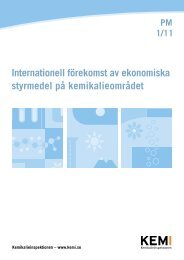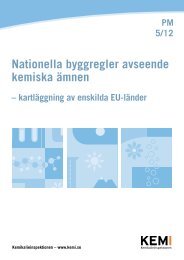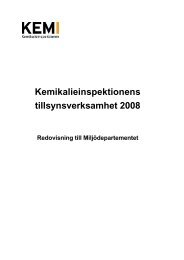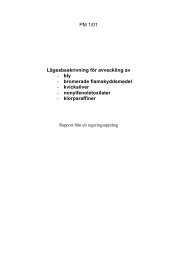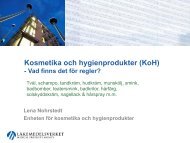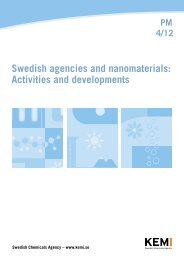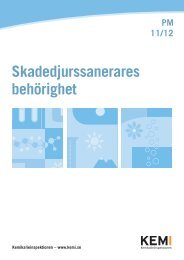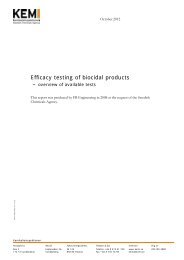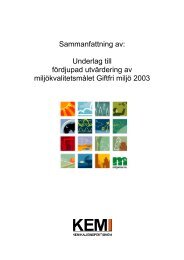KemI Rapport 3/06. - Kemikalieinspektionen
KemI Rapport 3/06. - Kemikalieinspektionen
KemI Rapport 3/06. - Kemikalieinspektionen
Create successful ePaper yourself
Turn your PDF publications into a flip-book with our unique Google optimized e-Paper software.
For a certain flame retardant substance to be a complete alternative, it must meet all thequality requirements, ranging from flame protection function to effect on the article’sperformance, function and appearance. Another factor is that there must be time forchangeover of production processes at different stages.IFP Research AB’s appraisal shows that there are a number of unhalogenated 18 flameretardant substances that meet the requirements in international standard UL 94 andequivalent European standards. The survey shows, however, that there are two applicationsin which there are no evident unhalogenated flame retardant substances. This concernsTBBPA in ABS plastic and HBCDD in expanded and extruded polystyrene (EPS andXPS).With regard to ABS plastic, the most likely solution is a switch to another brominatedflame retardant substance, primarily decaBDE, if continued use 19 of decaBDE isauthorised according to the RoHS Directive 20 . A changeover to decaBDE is not betterfrom the health and environmental point of view. Other options are to choose anothermaterial or combinations of materials.Polystyrene (EPS and XPS) does not, on the other hand, need to be flame-retarded to meetSwedish fire protection requirements.IFP Research AB’s appraisal also concludes that the alternatives are not used to a greaterextent. Technical requirements, cost reasons and specific fire protection requirements inindividual applications are grounds for them not being used to a greater extent. Anotherreason, which is cited by the electronics industry, for the low level of motivation on thepart of manufacturers to replace TBBPA in the manufacture of laminate for printed boardsis that the EU’s risk assessment of TBBPA does not show any risks from the use ofTBPPA as a reactive flame retardant.EC law requirements for a national banThe Directive relating to the type-approval of motor vehicles is harmonising with regard toboth health and environmental effects. A national ban can therefore not prevent the importof HBCDD or TBBPA that is incorporated in type-approved motor vehicles.To perform a full assessment of the scope for introducing a national ban, account must betaken of the proportionality principle. In order for a ban to be proportional, it must bepossible to achieve the aim with the measure, the measure must be necessary to achieve theaim and the measure must be in reasonable proportion to the aim.Consequences of a comprehensive banPractical and economic consequences18 Generic name for the five elements in group 17 of the periodic system; fluorine, chlorine, bromine, iodineand astatine.19 The Commission’s exemption for decaBDE in the RoHS Directive is the subject of scrutiny by the ECCourt.20 Directive 2002/95/EC of the European Parliament and of the Council on the restriction of the use of certainhazardous substances in electrical and electronic products.18



